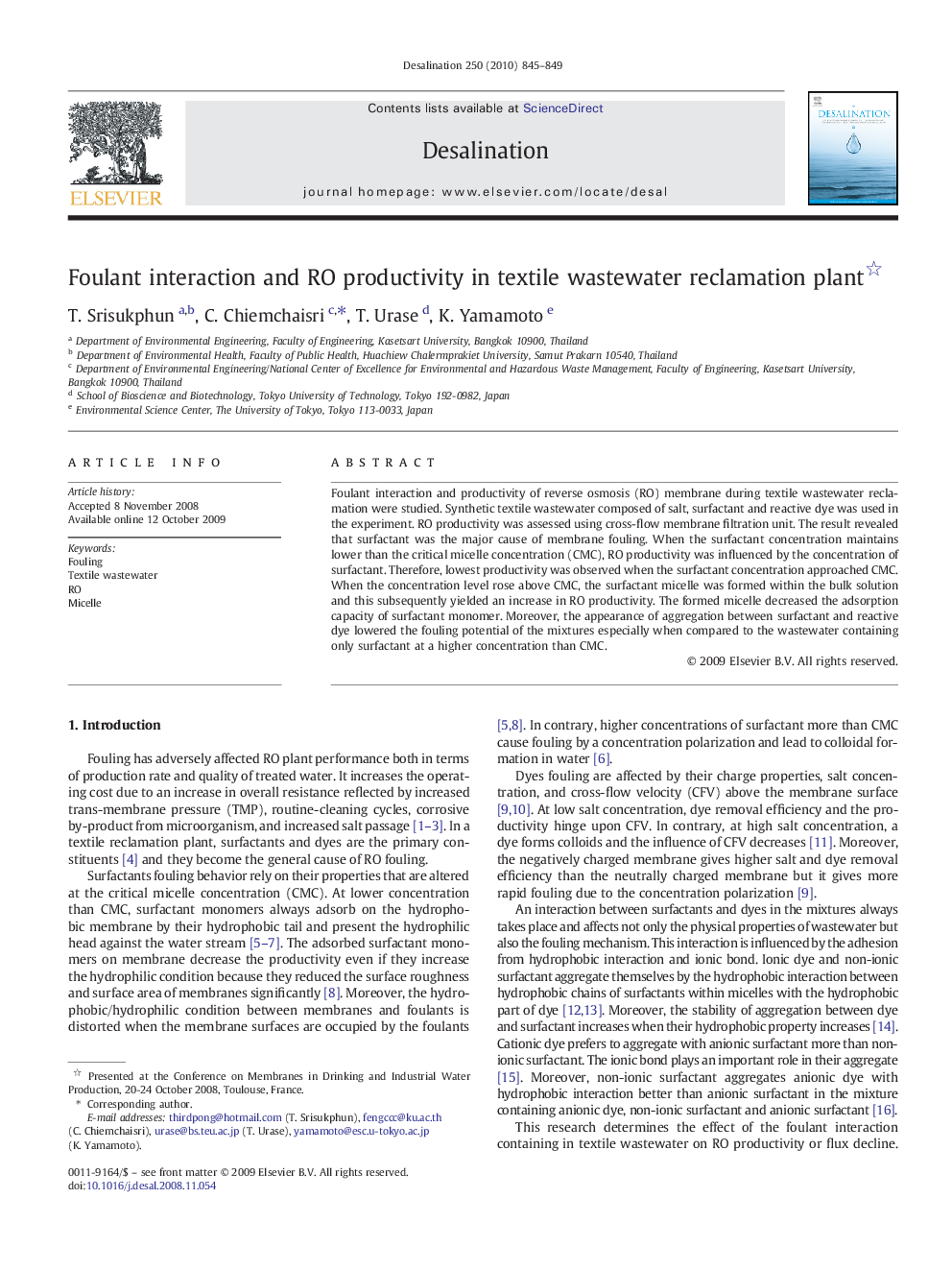| Article ID | Journal | Published Year | Pages | File Type |
|---|---|---|---|---|
| 626103 | Desalination | 2010 | 5 Pages |
Foulant interaction and productivity of reverse osmosis (RO) membrane during textile wastewater reclamation were studied. Synthetic textile wastewater composed of salt, surfactant and reactive dye was used in the experiment. RO productivity was assessed using cross-flow membrane filtration unit. The result revealed that surfactant was the major cause of membrane fouling. When the surfactant concentration maintains lower than the critical micelle concentration (CMC), RO productivity was influenced by the concentration of surfactant. Therefore, lowest productivity was observed when the surfactant concentration approached CMC. When the concentration level rose above CMC, the surfactant micelle was formed within the bulk solution and this subsequently yielded an increase in RO productivity. The formed micelle decreased the adsorption capacity of surfactant monomer. Moreover, the appearance of aggregation between surfactant and reactive dye lowered the fouling potential of the mixtures especially when compared to the wastewater containing only surfactant at a higher concentration than CMC.
